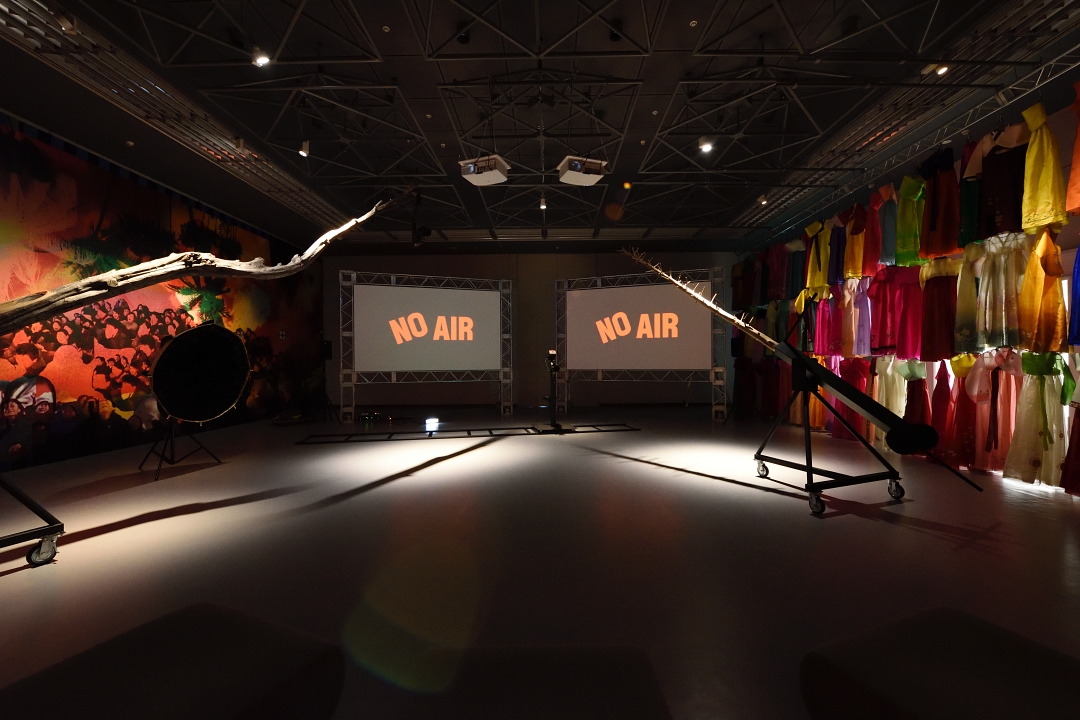
Adieu News
2019
Taming Y/Our Passion, Aichi Triennale 2019
Aichi Prefectural Museum of Art Gallery
Mixed media video installation
Dimensions variable
13 min. 35 sec.(loop)
Graphic designed by Yeo Hyejin
Video footage re-edited by Shim Dongsoo

Lim Minouk has created works that push beyond the boundary of different media, deepening the scope of questions derive from language, historic loss, and ruptures. Her work examines the marginalization ensued from the rapid socioeconomic development and the consequent displacement of communities. Lim works with a diverse set of mediums and in a variety of scales: large-scale installations combining photographs and videos with elements that produce tactile sensations, theatrical works incorporating songs, performances, and participatory tours, as well as pieces produced through the subtle active participation of viewers.
In Adieu News (2019), Lim turns to the group mourning and remembrance carried out by communities upon the loss of an absolute being, such as a god or national ruler. It develops her previous work The Possibility of the Half (2012), which focuses on passions and emotions being expressed in a way that transcends states. The title is a combination of French words meaning “goodbye” and “news.” In the exhibition space, modeled after a shooting studio, there are two large screens and one hundred Korean outfits arranged like curtains, as well as a wall-covering collage with a tropical background and countries’ television signs-offs. With these in the background, images are juxtaposed of people breaking down crying during the 1979 funeral of the former supreme leader of North Korea, Kim Jong-il, and that of the former president of South Korea, Park Chung-hee. These images are reflections of the “pathosformel (formularization of pathos),” a topic that Lim has explored up through the present, and are critical metaphors for societies in which state-related happenings are formularized, re-produced, and consumed via excessive broadcasting.
This work also sounds a warning bell about warped nationalisms that invite national passions without adequate reflecting on countries’ own histories, and is thus very suggestive in the context of contemporary Japan. In this fictional studio, along with the image of an imagined space between North and South Korea to be tropical, an endless historical loop is witnessed and the beginning of a world of new organic relationships awaits. Therein is a yearning for a special space that transcends the borders (in a narrow sense) between North and South Korea, as well as between South Korea and Japan.
[Iida Shihoko]